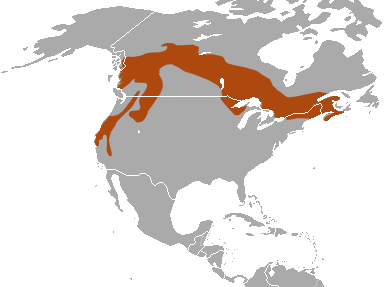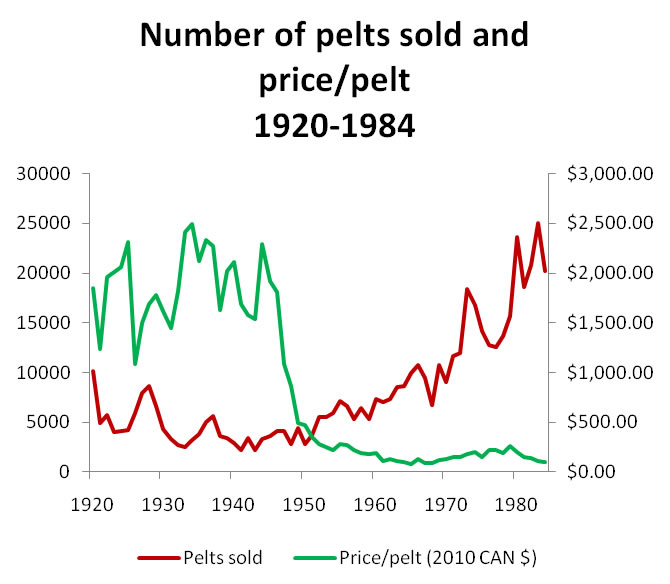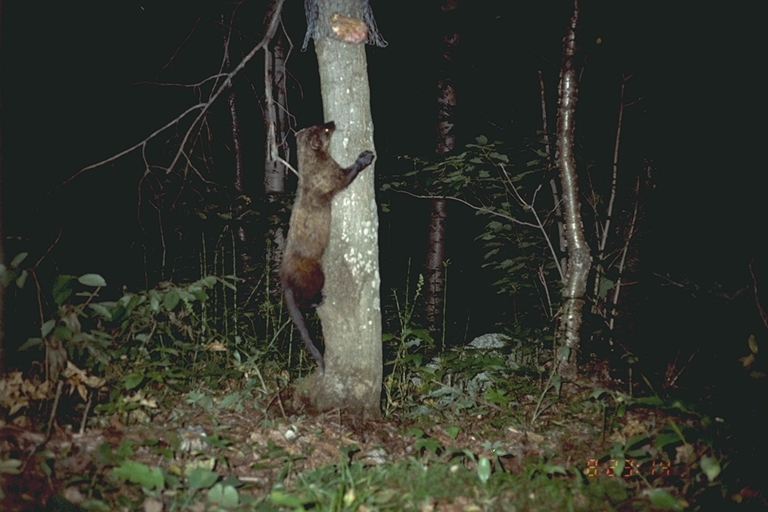The following article is by postdoctoral researcher Matt Niblett:
One of the biggest challenges facing conservation biologists and ecologists is the development of a knowledge base that is sufficient to make cogent decisions in protecting threatened species. Often, expert opinion drives the derivation of the key question: what comprises suitable habitat for key species? Such opinion and even modeling tends to support what is commonly known, but doesn’t always capture what is necessary. For example, the ideal habitat of the San Joaquin Kit Fox is a grassy plain that has not been plowed or cultivated. The kit fox even tends to avoid riparian areas, as it meets its daily need for moisture from the prey that it consumes. Conventional wisdom suggests that they avoid urban areas, as they would end up as road kill. That is, urban areas would be a sink, as any fox that wanders into an urban area would probably be hit by a vehicle as they hunt at night. But recently, the kit fox has been found in sizable numbers living in the town of Bakersfield, burrowing under school portables, hunting on school grounds, and even eating the leftovers from McDonald’s and other fast food restaurants. Now we find that the school system in Bakersfield must find a way to ensure this population survives, even though their presence under school portables has generated problems like a flea infestation. What is wrong with this picture? The Kit Fox is doing what we had once thought impossible: living in an urban area. But upon a closer look at school grounds, one can see habitat elements that were less understood but are brought into better focus. That is, there are large open grassy spaces; protected den areas under portables; mice, squirrels, etc. within easy reach; and quiet school grounds at night. Thus, some of the key habitat elements exist in an urban area for the Kit Fox. The research that we report in “Structure of Fisher (Pekania pennanti) Habitat in a Managed Forest in an Interior Northern California Coast Range” provides a close look at habitat needs for the Fisher, a member of the weasel family with the Latin name Pekania pennanti.
If one developed a suitability map for habitat for the kit fox, a typical characterization would be to zone out all areas that are urban (Gerrard, et al. 2001). In fact, one would be hard pressed to classify any areas of a city as potential habitat unless one analyzed habitat at the appropriate spatial scale. Scale and habitat elements mean everything. For example at the five acre scale, one might find park open space and school grounds as possible areas, but at larger scales of analysis, one might find little if anything that seemed appropriate for the fox. The work that the Niblett et al. (2015) paper addresses involves habitat analysis for the fisher. Most experts seem to agree that the fisher requires about 3 to 5 thousand acres of mature to old growth mixed conifer forest, with few openings of any size, to support a female fisher. This opinion, widely held by biologists, means that habitat protection translates to protecting mature to old-growth forests for the fisher. But, an industrial forest in northern California that is not old-growth and varies considerably in terms of age and open areas contains a population of fishers that are producing offspring and appear to be viable. The average landscape of this industrial forest is considered poor by experts. In fact, some would classify it as an area that would be entirely avoided by the fisher. So what gives? Why the dichotomy between the experts and the fishers? Experts have established that female fishers require old, large trees that can serve as den trees (large enough to form cavities). Our study finds that they don’t have to be so prevalent that the entire forest is old and mature where almost any tree is suitable for denning, but that such trees must be present at the scale of about 4 to 8 acres every 40 acres. That is, if the forest was divided into 40 acre units, and stands of trees between 4 to 8 acres exist where older trees are present at a size that probably contains cavities, then fishers can exist. Further, the assumption that openings should be few in number and small cannot be supported by the data.
Clearly, we have found that the fisher prefers to live within a group of trees with dense canopy, but it doesn’t need to be a continuous swath of trees as traditionally thought. The interpretations of this study were based upon the development of a new statistical approach that compares 40 acre units within areas of known use by the fishers as compared to 40 acre units outside known fisher territories in the same forest. On the average, there is no difference statistically between known areas of use and the rest of the forested area. However, if we focus on the best 4 acre plot within each 40 acre unit we find that female fishers tend to discriminate and occupy those units where the best plot within each 40 acre unit contains large, older mature trees. To demonstrate this, we needed to develop an approach which could prove that the fishers’ use of the landscape was statistically significant. We wanted to determine what elements and their prevalence dictated use. What was a surprise was that that the fishers can exist and reproduce in forested areas with numerous open areas when old trees exist in stands within a sizable number of 40 acre units, even when the stands themselves may be populated by younger trees. Just as in understanding the Kit fox, the answer is hidden in finding the appropriate scale of analysis. We also had to expand an existing statistical methodology to calculate if their use on this landscape was significant with respect to the best elements in each 40 acre neighborhood. The good news is that the potential habitat for the fisher in California is considerably larger than previously thought. But, it still faces threats, like development, the use of rodenticides by illegal marijuana growers, and decreased numbers of prey during times of drought.

.jpg)




